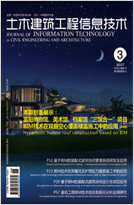Abstract:
In order to effectively protect the employees′ heath, therefore, resolutely prevent the spread of the epidemic, strength control the flowing of the returning staff and fully monitor the temperature are the first priority of the epidemic prevention and control work. By studying the implementation process and system test of QR Code technology, combining with the specific situation of the enterprise, QR Code technology is applied in the functional modules of entry and exit registration of returning staff, records of daily health, disinfection records of public facilities, etc. The adoption of QR Code scanning registration method can put the basic personal information and travel status information into system, which can shorten the contact time of personnel and reduce the risk of cross-infection, thus greatly improve the work efficiencies. Also, it ensure that the people are flowing in a closed loop, therefore, it has improved the effectiveness of epidemic prevention and control.










 下载:
下载: